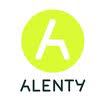Alenty Offering Ad Visibility For European Agencies And Advertisers
by Ciaran O'Kane on 3rd Mar 2010 in News


Alenty is a Paris-based ad visibility specialist, offering advertisers and agencies the tools to monitor the visibility time of their display campaigns. Laurent Nicolas, Alenty Founder and CEO, took time to speak with ExchangeWire this week about the company's ad visibility offering, how it is helping European agencies and advertisers gain more transparency into their display advertising buys and why Alenty can improve CPM rates for publishers.
Can you provide an overview of the Alenty platform, and the key aspects of your offering, such as the ad verification and optimisation functionality?
LN: Alenty has developed a whole toolbox that brings Ajax to web analytics. The main application is advertising visibility measurement (how long is a banner visible on the screen while someone is watching the screen). Other applications are real site-centric page duration, subcontent readership (when several articles are displayed in the same page), form optimization (field-by-field drop out and filling duration).
Can you run through how a typical customer would use the Alenty platform?
LN: For advertising measurement, our script is simply parametered in our clients' adservers. It is completely automatic, which means that all the information is retrieved automatically from the ad server. The clients get online access to the measurement data, can download very detailed excel reports and can even get recommendations from our consultants.
What are the benefits for advertisers and agencies?
LN: Advertisers at last get relevant metrics for their branding purposes. If you talk about click to a CPG customer who mostly buys TV ads, you won't speak his language. If you tell him how many contacts have actually seen the ad, how often, and how long, then he can link this information to his global marketing strategy.
Agencies use our data for more operational purposes. They can negotiate with publishers, and choose the most efficient sites based on measurement data. They can also increase revenue simply by reselling our data to advertisers.
Do you think brand safety is the reason why some big European brands are not committing more marketing budget to display advertising?
LN: Even more important than brand safety is communication. I think this is a crucial hindrance to enabling the web to develop as a branding media. As I said above, you must speak the marketers’ language. And they don't understand how clicks can influence off-line purchases attitudes. But they do understand that advertising exposure influences recall and purchases.
How does your platform help publishers?
LN: Some publishers have ad-spaces that are better for branding than direct performance. For instance, media websites benefit from long page durations, and an efficient page layout that does not hide the ad. So ads are very visible on these ad-spaces. But generally: the more interesting the content, the lower the click-rate. Visitors are simply not ready to leave interesting content. So publishers need to sell by CPM, and prove that the ad-space is better than other ad slots. Our technology can help publishers achieve that.
Can you give an example of how a publisher client, using the Alenty platform, increased its CPM by selling guaranteed visibility?
LN: Canal Plus changed its business model for online advertising about twelve ago. Instead of selling impressions, they started to sell exposure duration (GEP, Garantie d'Exposition Publicitaire in French). The advertiser decides if he wants to buy 10 seconds, 20 seconds or 30 seconds per impression. And 30 seconds is 3 times more expensive than 10 seconds. CanalPlus claims that their revenues have doubled. Our offering helped Canal+ measure ad visibility on their ad inventory.
Can Alenty’s platform help publishers to lift CPM rates?
LN: Another easy way to lift CPMs is simply to use our results as commercial arguments. When we audit a website, we make sure that we measure a representative set of ads. This way, the visibility results that we provide are very robust arguments for the publishers' sales team. Then they can create a premium pack with the best ad-spaces, or improve the visibility of the bad ones...
Do you work with ad networks and ad exchanges too?
LN: Ad exchange platforms are developing first on direct performance optimization. Branding optimization will come next.
Ad networks need to prove the visibility of their ad-space, more than anybody else. In a CPM model, either the advertiser checks where the ads are placed by visiting the website, or use a third-party like Alenty to measure what was bought.
How would Alenty differentiate itself from other ad visibility products on the European market?
LN: Our system is more technology agnostic. It works with all adservers, for all websites, without any change on their side.
Do you think that ad visibility will become a major consideration for both European publishers and advertisers in 2010? Will we see widespread adoption of ad visibility technology?
LN: Ad visibility is a major consideration in 2010. Habits change slowly, but when both ad buyers and ad sellers push in the same direction, the whole market can evolve quickly.
How many markets is Alenty operating in at the present time? Are there plans to move into other markets this year?
LN: We currently have operations in France, Germany and soon UK. We also measure international campaigns that run all over the world.
Are there major differences in the display markets of different European countries?
LN: I think that the markets have the same "bad habits" and the same problems to solve.
What kind of developments are you seeing in the French display market? Has there been a move towards audience-buying? Are exchange and automated trading platforms gaining traction in the market?
LN: Trading platforms don’t have any real traction in the French market at the moment. But it is a very very hot topic, and you’d expect to see some serious development in that area over the coming twelve months!
Ad NetworkAd VerificationAgencyDisplayExchange







Follow ExchangeWire